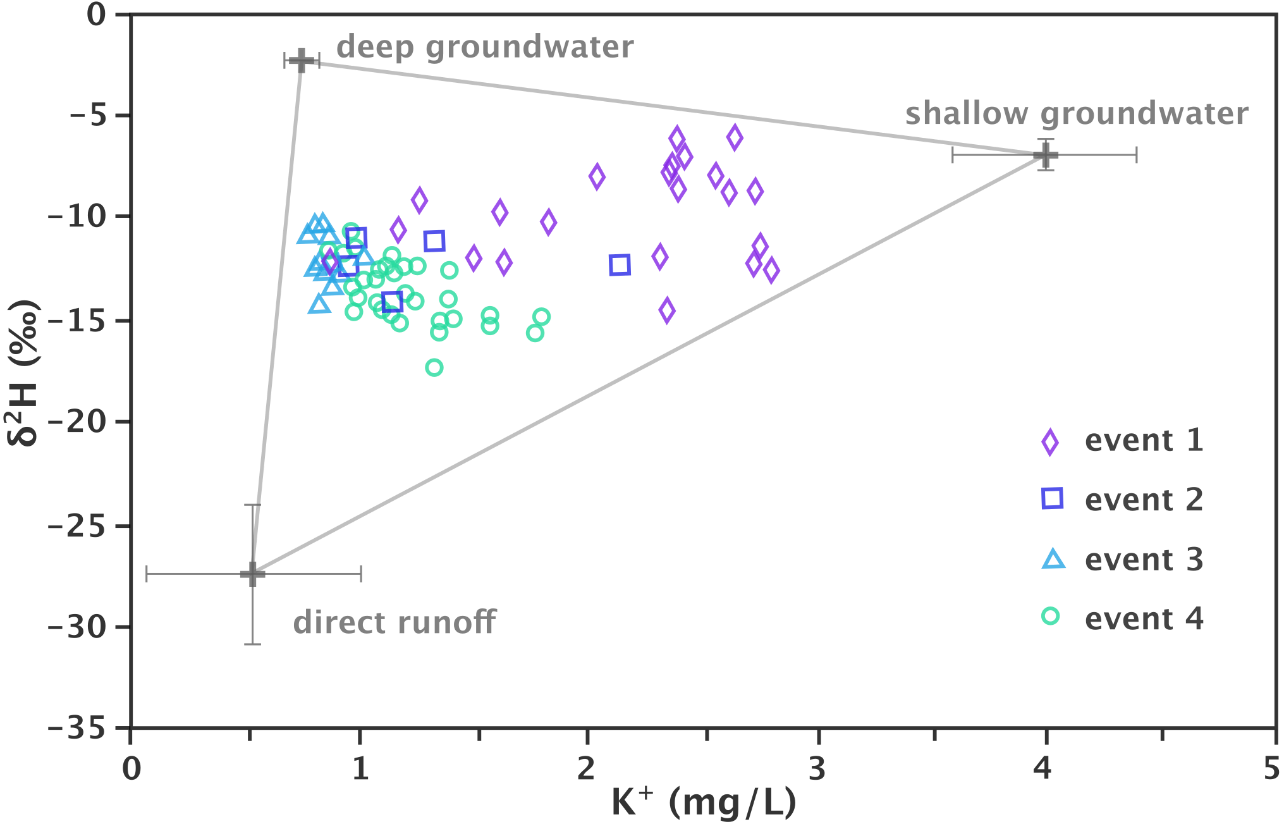7.8 Detecting Groundwater in Surface Water
Camacho Suarez and others (2015) used stable isotopes in combination with hydrochemistry to compare water types and discharge rates in the Kaap catchment, Mpumalanga, South Africa. They made use of multi-component hydrograph separations with steady-state mass balance equations, as per Uhlenbrook and others (2002). The results of their two-component hydrograph separation yielded runoff contributions of 5 to 36 percent of direct runoff as a proportion of streamflow for 4 different rain events. In addition to this, they conducted a principal component analysis (PCA) and found δ2D and K to be poorly correlated (i.e., to vary independently) and were thus able to use these two parameters to conduct a three-component separation, as shown in Figure 42. This revealed a large difference in relative contributions of shallow versus deep groundwater to streamflow. In particular, for events where prior precipitation has wetted the catchment, the shallow groundwater and runoff contributions are greater than for events occurring after a dry period.

Figure 42 – Three-point hydrograph separation based on δ2H and K values for 4 rain events in the Kaap catchment, Mpumalanga, South Africa. Different events revealed different proportions of groundwater and runoff in the streamflow, depending on the weather and ground conditions before and during each event (after Camacho Suarez et al., 2015).
